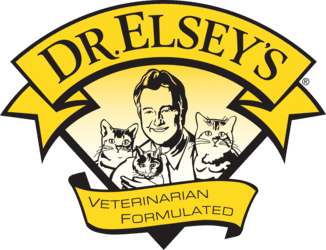
Then and Meow: A History of Cat Litter
Cats and humans have lived together for thousands of years. Most of that time, cats came and went as they pleased, hunting for their own food and taking care of business in the great outdoors. While their au natural bathroom might have been out of sight (and smell) from humans, the same can’t be said for the present state of our indoor companion’s box.
While it might seem like the litter box is a tale as old as time, it’s a relatively new invention in the history of domesticated cats. Even more recent than the indoor box is the concept of litter itself. From then to meow, we’re traveling back in time to share the story behind the creation of cat litter.
Cats are instinctively born with the knowledge of how to cover their tracks and mask their scent. During cats’ history outdoors, they gravitated toward soft dirt or sand, given the granular consistency that made it easier to bury their waste. For this reason, modern indoor cats are naturally attracted to the feel of cat litter beneath their paws.
While it’s easy to imagine cats burying their waste in the sands of ancient Egypt, it wasn’t until the late 1940s that cats more commonly shared the homes of their human companions. As cat owners became increasingly aware of outdoor cats’ safety issues, many began bringing their pets inside. Typically, indoor cat owners kept containers of ashes, sawdust, soil, newspaper and—you guessed it—sand for their cats to use. As you can imagine, dirty paw prints and a lack of odor control made for a messy situation.
Ultimately, it was an accidental experiment that paved the way for cats as mainstream indoor pets. In 1947, Edward Lowe lived in Michigan, selling sand, sawdust and clay to absorb oil and grease in factories and machine shops. On a cold day in January, Lowe’s neighbor Kay Draper stopped by to ask if he had any sand available to use as cat litter—she was tired of her cat tracking ashes all over the house. Since it was the middle of winter, all the sand piles were frozen. Instead, Lowe handed her a bag of granulated clay.
Draper reported back that the clay performed much better at keeping odors down, and soon she and her friends began routinely asking for clay to fill their very own litter boxes. Since Lowe’s clay minerals were more capable of absorbing liquid and worked far better than sand or ashes, he decided to package and sell his product as the very first “kitty litter” on the market.
In 1985, our very own Dr. Bruce Elsey was in search of a better in-home elimination solution. As the owner of the first-ever “feline only” practice in the Denver Metro area, he drove to a local mine to acquire clay fines and started testing product options with the help of his feline patients. Dr. Elsey began packing the clumping clay in gallon milk containers inside a garage next to his clinic and selling the first all-natural, superior clumping cat litter on the market. Soon after, Dr. Elsey and his wife Kathy established Precious Cat Inc. in 1987.
By 1999, Dr. Elsey started testing Cat Attract®—an all-natural feline behavior modification and training cat litter—at his clinic, local shelters and other independent feline clinics around the United States. After decades of successfully helping cat owners create proper care routines, company manufacturing was moved from Colorado to a larger facility in Wyoming in 2020. This move provided closer access to the source of silver sodium bentonite clay and the railroad system used for product transportation.
With superior odor control and a variety of solutions-based formulations, Dr. Elsey’s strives to offer litter products that solve the complex needs of pet owners.
Discover which of our veterinarian formulated litters is right for your cat’s needs by taking our free litter quiz!




